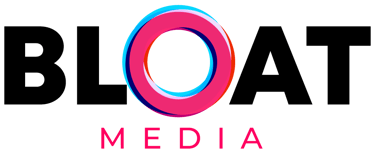How to Use Facebook Audience Insights to Target Like a Pro
When it comes to Facebook Ads, even the best creative will fall flat if you’re targeting the wrong audience. That’s where Facebook Audience Insights and detailed targeting come into play. At BLOAT Media, we treat audience building like digital matchmaking — pairing the right message with the right person at the right time. This post breaks down how to build high-performing audiences using Interest, Behavior, Custom, and Lookalike targeting, backed by data and strategy. Whether you’re launching your first campaign or fine-tuning an existing one, this is how to target like a pro.
4/20/20252 min read


Why Audience Targeting Still Drives Performance in 2025
The Meta algorithm is smart. But it still needs direction.
When you hand-feed it quality data — whether that's tight interest segments, clearly-defined custom audiences, or behavior-driven lookalikes — your ads enter a completely different league.
Done right, you'll see:
Lower CPMs
Higher CTRs
Tighter cost-per-result benchmarks
Scalable results with fewer variables
If you're running Facebook Ads without a structured audience strategy, you're running blind.
Start with Facebook Audience Insights
Access Audience Insights inside Meta Business Suite under "Audiences" or directly within Ads Manager when creating a Saved Audience. Here, you can analyze:
Demographics (age, gender, job titles)
Devices
Page Likes
Lifestyle segments
Top locations
It’s the sandbox we use to model our ideal customer before the first dollar is spent.
Four Core Targeting Types (And When to Use Each)
1. Interest-Based Audiences
Still essential for cold campaigns, especially at the top of funnel.
We typically layer niche interests with platform behaviors. Example: Instead of just targeting “Skincare”, we build stacks like:
“CeraVe” + “Guardian Singapore” + “Digital Wallets”
This avoids broad audience fatigue and improves learning speed.
Pro tip: Exclude brand-aware audiences when testing new hooks to isolate creative impact.
2. Behavior-Based Audiences
Meta’s behavioral data is next-level. Tap into:
Frequent travelers
Device users (e.g., iPhone 14)
Online shoppers
People who’ve clicked ads in the past 7 days
These are warm behaviors — and they compound your campaign's efficiency.
3. Custom Audiences
Where we do the heavy lifting.
Custom audiences are built from:
Pixel-tracked web visitors
Video views (we segment by % watched)
Engagements (comments, saves, DMs)
Uploaded CRM lists (email, phone)
You don’t run remarketing without custom audiences — period. This is where your warm-to-hot funnel is built.
4. Lookalike Audiences
This is how we scale.
But here’s the mistake most brands make: they build lookalikes off everyone who visited the homepage. That’s noise.
We build ours off:
High LTV customers
Lead forms submitted in the last 90 days
Completed purchases only
Loyalty program participants
With strong seed data, 1% lookalikes become a high-performing cold layer. We then scale to 3–5% once we confirm baseline performance.
Targeting Strategy by Funnel Stage
Here’s how we typically sequence targeting across a conversion funnel:
Top of Funnel (TOF): Lookalikes (1%), Broad+Interest
Middle of Funnel (MOF): Website viewers, 75% video viewers, Insta engagers
Bottom of Funnel (BOF): Cart abandoners, product page viewers, previous purchasers
Each layer runs different messaging, different creative, and different CTAs.
Real Application: Scaling a Local Brand
We helped a Singapore-based dental chain who was getting weak results from generic 5km radius targeting.
Here’s what we rebuilt:
TOF: Women aged 30–50, interests in “Invisalign”, “Healthhub”, “CNA News”, using iOS
MOF: FB + IG engagers in last 14 days
BOF: Booking page visitors with no appointment
Result: 2.4x higher CTR and 48% reduction in CPL within the first month.
Mistakes We See (and Avoid)
Using vague interests like “Fitness” or “Marketing”
Skipping exclusions for converters (causes wasted overlap)
Not splitting desktop vs mobile in B2B funnels
Treating cold and warm traffic with the same creative
Running lookalikes without cleansing the seed data
Meta rewards relevance. If your audience definition is lazy, your CPMs will reflect that.
Final Thoughts
Facebook Ads targeting is not guesswork. It’s not set-and-forget either. It's an ongoing optimisation loop of testing, refining, and adapting.
If you’re not inside Audience Insights weekly, auditing performance by segment, or using Custom Audiences to their full potential — you’re playing catch-up.


